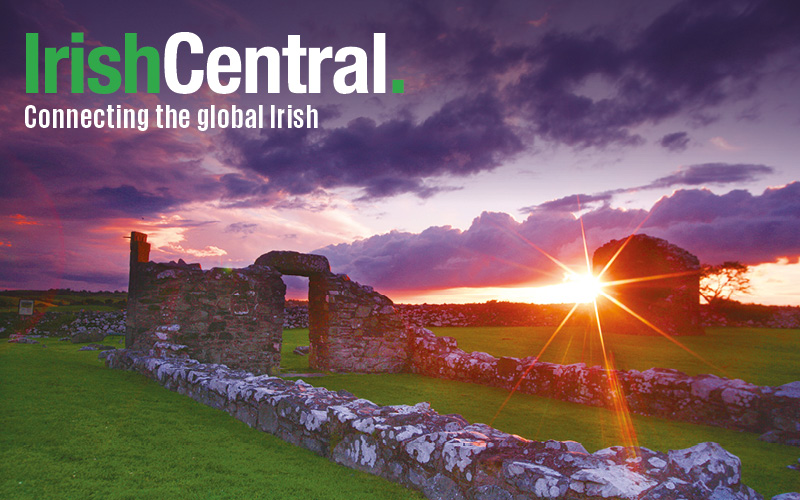Throughout the 1870s, the Canadian town of Smiths Falls, Ontario could boast that a massive half of its population was Irish. Today, the town is reconnecting with these Irish roots by exploring the establishment of an official link with their ancestors’ home place.
At a town meeting last week, Smith Falls Mayor Shawn Pankow spoke of the process of formally twinning with Carnew, Co. Wicklow as part of the Coollattin Canadian Connection. Coollattin is the name of an estate near Carnew. During the mid 19th century thousands of tennants on the estate left for the New World, often with the assistance of the estate's owners.
The Coollattin Canadian Connection is a local Carnew initiative to help reestablish the links between those Canadian towns where many of the estate's former residents settled with the Carnew area.
Calling the twinning a “natural fit,” Mayor Pankow said it was an exciting prospect for the Ontario town which has an extensive Irish history.Many of those who found themselves in Smiths Falls came from Coollattin Estate, which was owned by the Fitzwilliam family. In 1847, the most harrowing year of the Irish Famine, the British Parliament passed legislation that transferred all responsibility for the welfare of Irish tenants living on estates from the government and to the landlords. Many of these landlords were “absentee,” meaning they mostly lived in England, and agents collected the rent from their tenants and would managed the estate in their stead.
Several of these landlords decided it was best to rid themselves of these tenants and the responsibility of looking after them by aiding their passage to the USA or to Canada. During the years 1847 to 1856 6,000 Wicklow tenants who lived on the Coollattin Estate found themselves forced to relocate with the 'help' of the Fitzwilliams.
Many of the Irish immigrants from Coollattin ended up in Smiths Falls or the surrounding areas. Speaking at the Smith Falls town council meeting on July 11, Economic Development and Tourism Coordinator, Ingrid Bron stated that the town was approached by Kevin Lee, an Irish historian of the Coollattin Estate and Carnew, and the project leader of the Coollattin Canadian Connection. Lee had previously visited Smiths Falls in 2014, noting that many of the last names on the cemetery's headstones matched the last names found in Co. Wicklow.
Among these names were Byrne, Carr, Clare, Coghlan, Dagg, Doyle, Eagers, Jackson, Kenny, Lowman, Murphy, Pearson, Pierce, Rickby, Tallant, Tallon, Timmons and Whelan.
Read more: Montreal’s Irish fight for memorial to the 6,000 famine immigrants who died of typhus
The “Carnew twinning will give Irish descendants in Canada and Ireland something to gravitate around,” stated Bron. That desire to strengthen ties between Canadian towns and Irish towns that they have historical links with is growing across Canada, particularly in Ontario and Quebec, including a concerted effort among the Irish in Montreal to secure an Irish Famine Memorial park.
“I’ve been around council for a while, and I haven’t seen anything like this coming forward,” stated Smiths Falls Councillor Dawn Quinn, referring to a nearby town’s link with the Scottish town of Perth that saw that Smiths Falls neighbor entice 4,000 kilted people into breaking a Guinness World Record last year.
“Imagine what we could do in Smiths Falls,” Quinn said.
“Our community here would feel very honored to build a bridge with the town and community which reached out and offered a new home to thousands of our people who were assisted in immigrating to Canada by Lord Fitzwilliam, the 19th century owner of the 90,000-acre Coollattin Estate in South Wicklow,” said Wicklow historian Lee.
Read more: Bravery of the Grey Nuns of Montreal during Great Famine honored
Mayor Pankow will further explore the opportunities presented by the partership with Carnew when he travels to Wicklow later this summer on a family vacation. A resolution will be passed in support of the twinning project at the next town council meeting.
As many as 100,000 Irish people traveled to Canada on 'coffin ships' in 1847 through choice or by forced migration. They arrived at a quarantine station in Grosse Ile in Quebec. While the journey ended there for some, others stopped in Montreal where thousands more lost their lives in a severe typhus-outbreak that killed both immigrants and the Canadians who attempted to help them.
Others made their way along the St. Lawrence River traveling further inland toward Toronto, landing in areas such as Smiths Falls.
H/T: Inside Ottawa Valley



Comments